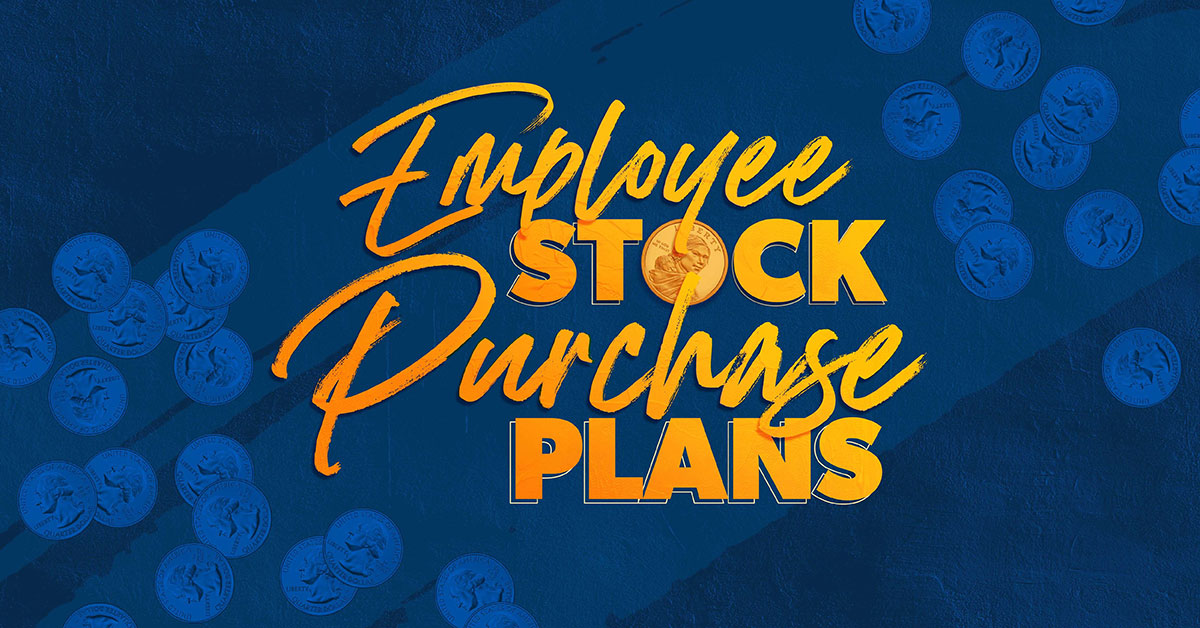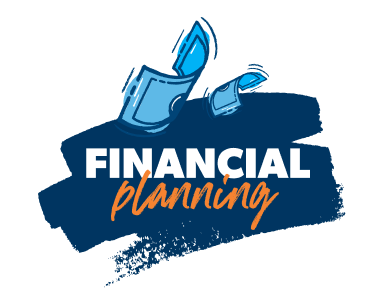What Are Employee Stock Purchase Plans (ESPP)?
8 Min Read | Jun 11, 2024

Imagine getting hired at an established, well-known publicly traded company. Let’s call it BigWigs, Inc. As part of the hiring process, a human resources representative goes over all your benefits with you—things like health insurance, a 401(k) and paid vacation time.
Then they mention something called an employee stock purchase plan, or ESPP. You’re encouraged to participate. Why? Because not only does it mean getting discounted shares of the company’s stock, but what better way to show you’re really—literally—invested in the company.
A discount sounds great . . . and why wouldn’t you want to invest in BigWigs if you plan to spend a large chunk of your life there? Well, the answer isn’t quite so simple. Before you enroll in your company’s employee stock purchase plan, let’s take a look at what it could mean for your investment portfolio.
What Is an Employee Stock Purchase Plan (ESPP)?
An employee stock purchase plan is an employee benefit offered by publicly traded companies that allows employees to buy company stock at a discount through a payroll deduction.
Market chaos, inflation, your future—work with a pro to navigate this stuff.
In a lot of cases, these discounted shares are only offered to you after you’ve worked at the company for a certain period of time (this is called “vesting”), or you may have access to them right away. You’re only taxed after you sell your shares.
But how does an employee stock purchase plan actually work? Let’s dive right in!
How Do Employee Stock Purchase Plans Work?
Who doesn’t love a discount? But a discount is really only a good deal if you were already going to buy the thing (or if it’s worth buying in the first place). The same logic applies when we start talking about employee stock purchase plans. A discount is appealing, but do you really want to park a portion of your hard-earned paycheck in an ESPP each month?
First, let’s do a quick review of some terms to know:
- Offering period. The offering period is the date range that employees can sign up to be a part of an employee stock purchase plan by setting up automatic payroll deductions that build up until the purchase date. An offering period is usually between 6–12 months long.
- Purchase date. At the end of the offering period, those built-up funds are used to purchase company stock at a discount.
- Holding period. The holding period is the amount of time you hang onto your shares before selling them. With an ESPP, to get tax advantaged rates, you need to hold onto your shares for one year after the purchase date and two years after the initial offering date.
Keep in mind that employee stock purchase plans have a contribution limit. You can only contribute up to $25,000 per year in payroll deductions.1 But ESPP shares almost always come with a 15% discount. Why? Because companies want you to invest in them. And some can get pretty hard-core about “encouraging” you to participate. Let’s keep going with our BigWigs example for a closer look.
BigWigs shares sell for $10 each, but with your 15% discount you can buy at $8.50 per share instead, meaning you’d save $1.50 on every share you buy. If you buy 100 shares at that discounted rate, that means you could immediately turn around and sell your shares for a $150 profit. When you crunch the numbers, that’s a 17.6% gain—which is pretty good!
What’s the “lookback period”?
The lookback period is sometimes offered as an additional benefit to employees. If your employer offers this benefit it means your 15% discount is applied to either the first or last day offering period price—whichever is lower.
So if the offering period ran from Jan. 1 to June 30, and shares were $10 on Jan. 1 and $12 on June 30, the lookback period would apply to the $10 shares. You’d pay $8.50 giving you an even bigger return of $3.50 per share (since the price is now higher) instead of $1.50 per share if you were to immediately sell them after the purchase date. Be careful though. If you sell your shares immediately, you won’t meet the requirements for the holding period and your shares will be taxed as ordinary income. All those earnings can get eaten up really fast that way!
How Are Employee Stock Purchase Plans Taxed?
There’s always fine print, isn’t there? When it comes to employee stock purchase plans, there are some tax considerations to keep in mind. Remember, you don’t pay any tax until after you sell your shares. It gets a little more complicated from there.
Qualifying Dispositions vs. Disqualifying Dispositions
A qualifying disposition happens when you sell your shares at least one year from the purchase date and at least two years from the offering date. Remember, this is called the holding period. The discount you receive on the shares is taxed as ordinary income. Then this is where the tax advantage comes in: Because you met the holding period eligibility requirements, the money you make on the sale of your shares is subject to capital gains tax instead of your ordinary income tax. That can make a huge difference since capital gains tax is almost always lower than income tax.
A disqualifying disposition happens when you sell your shares early—before the holding period is over. It’s a risk. When you sell before you’ve met the holding period requirements, those earnings are taxed at your income tax rate. They’re not treated as capital gains. So even though you might make more money selling when shares are high, you’re going to pay more in taxes.
Listen closely here: For matters like this, get connected with a tax professional you can trust. All of this stuff can be clear as mud and there’s no good reason you have to figure it out on your own. Especially when there are people (for whatever reason) who love to figure out tax challenges!
Keep Boosting Your Investing Know-How
Every two weeks, the Ramsey Investing Newsletter will send you practical insights, easy-to-use resources, and the latest investing news. All explained in plain English.
What Are the Risks of Investing in an Employee Stock Purchase Plan?
Now, we need to go over some of the risks of investing in an ESPP because there are a couple of big ones.
Volatility
Single stocks can be very unpredictable. Today’s big winner is tomorrow’s biggest loser. So when you’re talking about your retirement—your future—you’ve got to play the long game. Otherwise, you’re going to be up a creek without a paddle.
You want to avoid putting your hard-earned retirement money in single stocks. It’s just too risky. And what is an employee stock purchase plan but single stocks dressed up as a “benefit”? Remember, the value of your company’s stock can drop or go away in the blink of an eye.
Not That Great of a Deal
Fifteen percent off isn’t that great of a deal when you think about it. Do you get all that excited when a really nice sweater is 15% off? Probably not, because it’s still expensive! The same thing applies here.
Sure, 15% is better than nothing, but given the risk involved with putting too many of your retirement eggs in one basket, it’s not worth it. Stocks go up and down all day, and that 15% discount can be gone in a flash. It’s an accident waiting to happen.
Are Employee Stock Purchase Plans a Good Investment?
Let us save you some time: No! Here’s why. Those risks we were just talking about—they’re scary enough to make employee stock purchase plans a hard pass.
ESPPs are glorified single stock investments. And just because your company recommends them or you believe nothing bad could ever happen to a company as successful as yours, think again.
Instead, you want to diversify your investments, which you can get through a mix of growth stock mutual funds with strong track records. (If you’re new to investing, make sure you take some time to read up on how to invest in mutual funds.)
The only exception to the “just-say-no policy” on ESPPs is if they are given to you outright. If they’re a gift or reward from your employer, that’s fine. If you have to pay for them, say “Thanks, but no thanks.”
A Better Way to Invest
You really can win with money. You really can retire an everyday millionaire. And you don’t need to participate in an ESPP to do either. But getting a solid investment strategy in place takes time, and it’s not something you need to figure out on your own. Get with one of our SmartVestor Pros and find out what your next money moves could be. Let a qualified investment pro help you make a plan!
Make an Investment Plan With a Pro
SmartVestor shows you up to five investing professionals in your area for free. No commitments, no hidden fees.
This article provides general guidelines about investing topics. Your situation may be unique. To discuss a plan for your situation, connect with a SmartVestor Pro. Ramsey Solutions is a paid, non-client promoter of participating Pros.



